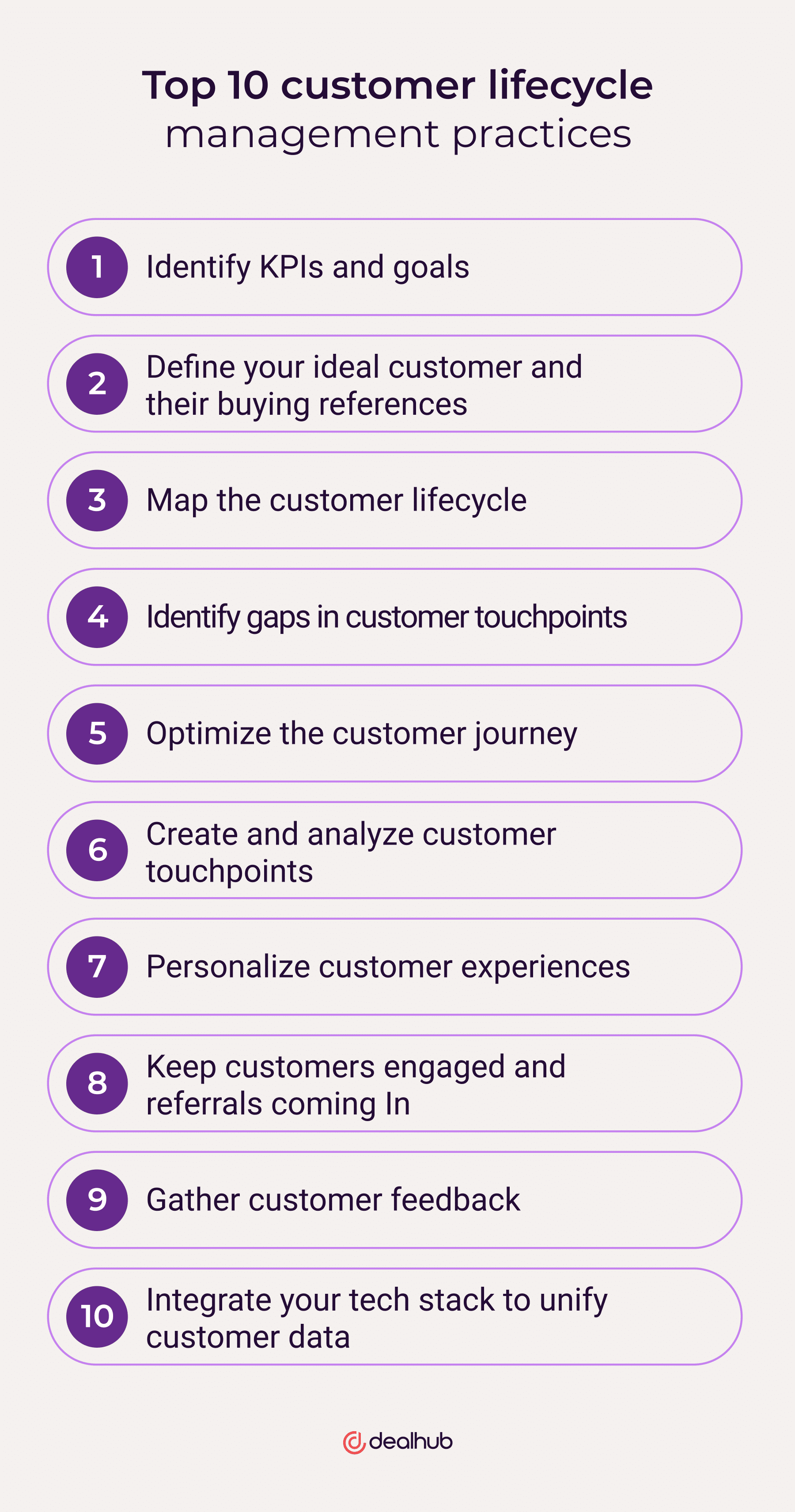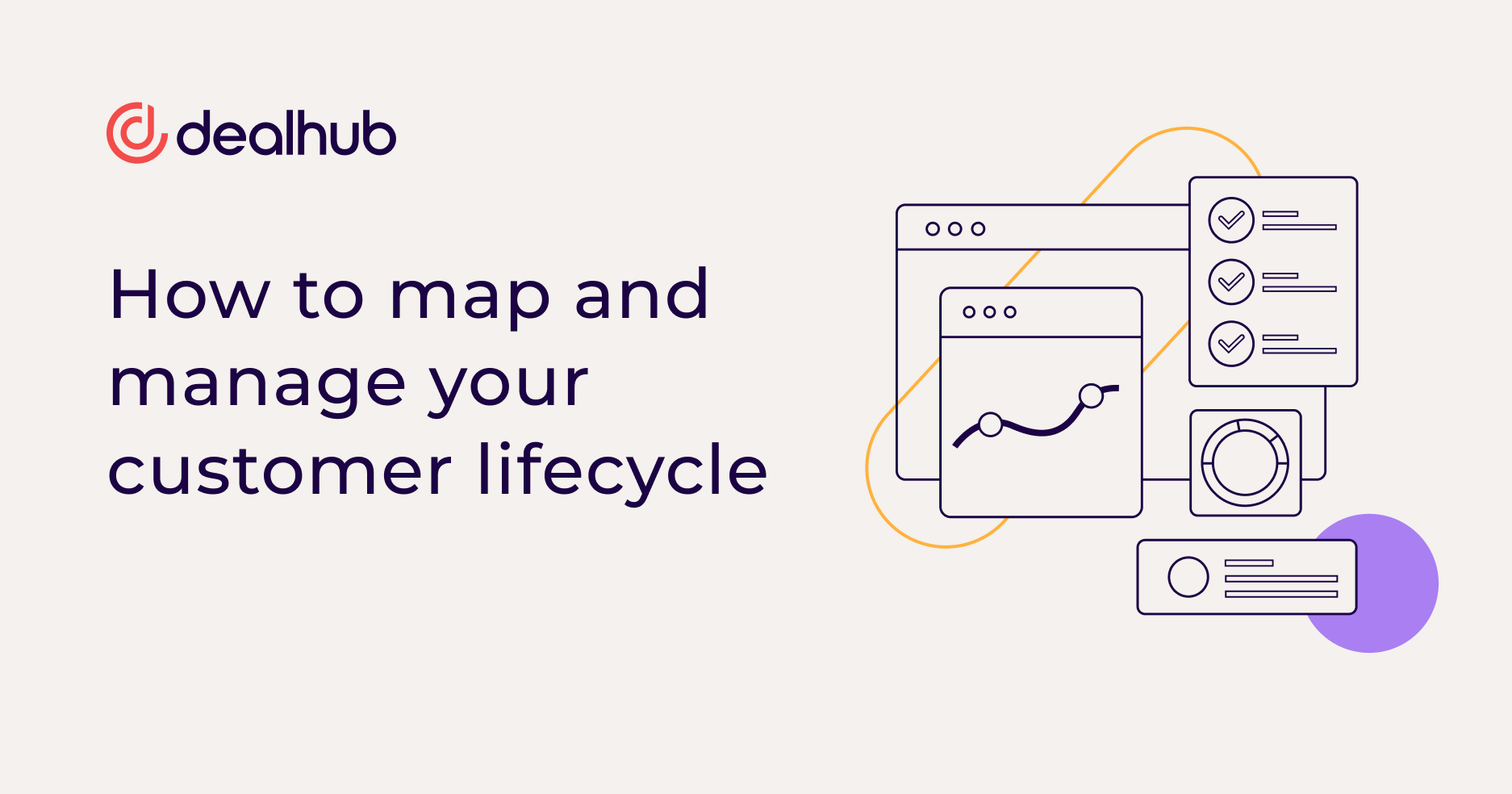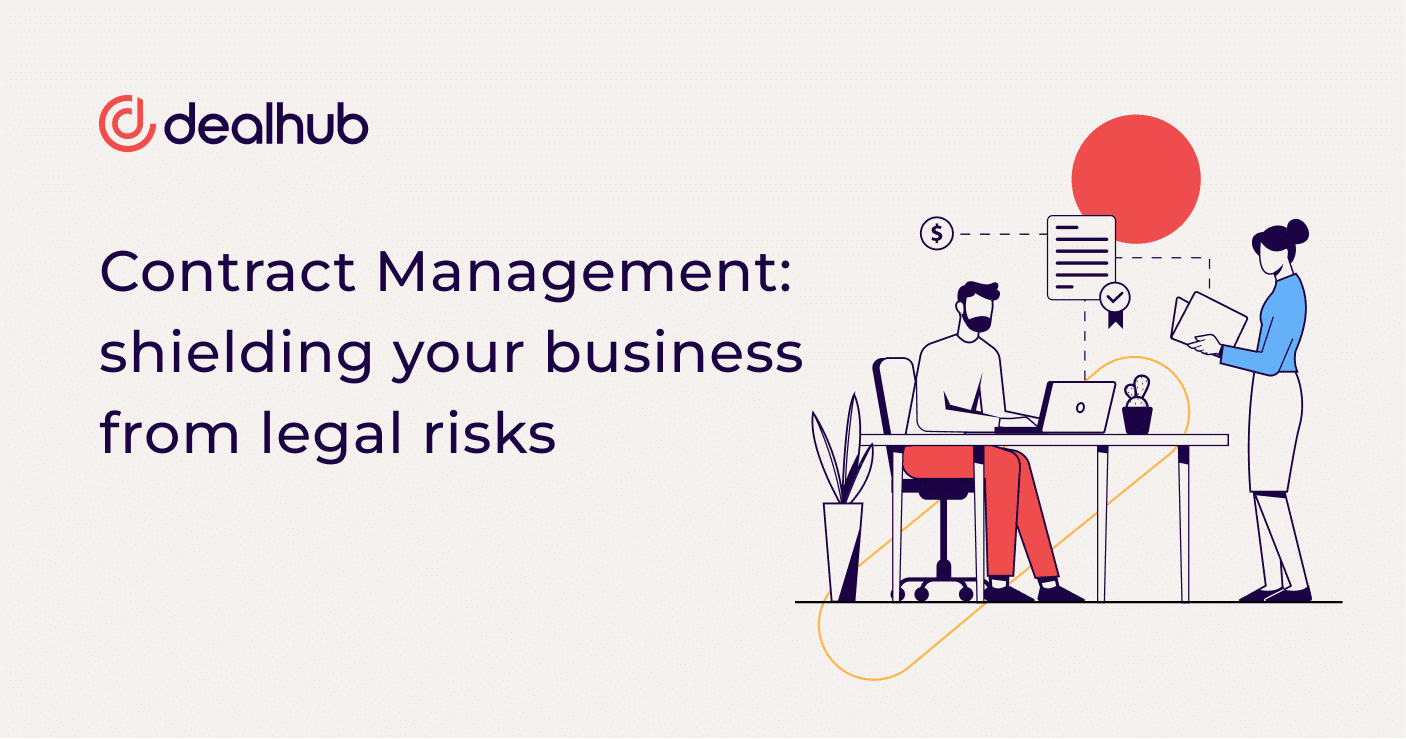The power of the customer lifecycle map
Imagine having a map at your fingertips to guide you through every aspect of your customer’s journey. Being able to see, at a glance, how your customer moves, from brand discovery to product purchase, is an invaluable source of information. With it, you’ll be able to see both pain points and opportunities in order to refine the buyer’s journey. A customer lifecycle map will visualize each touchpoint to understand what your customers need and expect at each stage. By keeping buyers engaged and satisfied, you can seamlessly move them from one stage to the next while fostering stronger relationships and boosting sales – and having a map on hand will give your sales team the guidance they need to engage meaningfully with clients.
Customer lifecycle stages
Let’s start by breaking down the customer lifecycle journey into key stages. First up, we have the prospects. These individuals know your brand but haven’t yet engaged with you for one reason or another. Once they show interest and are actively engaging with your content, they become leads. Leads who make a purchase become your customers. After that, it becomes a game of retention and turning one-off clients into repeat customers who keep coming back for more. Finally, we have the advocates. These are your loyal fans! They sing your praises and bring in referrals.
Each SaaS customer lifecycle stage is unique, and understanding them is vital for crafting effective strategies.

1. Awareness (prospects)
At this earliest stage in the customer journey, the ultimate goal is to capture the attention of potential customers and make them aware of your brand. Engaging blog posts, eye-catching social media ads, and informative videos can help a brand or business stand out. It’s essential to build brand awareness and spark an audience’s interest during prospecting.
2. Engagement (leads)
Congratulations! You’ve piqued a potential customer’s curiosity. Once you’ve got their attention, it’s time to nurture the relationship. Companies can engage with leads through personalized emails, interactive webinars, or one-on-one conversations. It is essential to show them that you genuinely care about their needs and build trust along the way.
3. Conversion (customers)
When a lead becomes a paying customer, it’s cause for celebration. However, it’s vital at this stage to deliver an exceptional buying experience to leave a great first impression. During a purchase, provide seamless checkout processes, excellent customer support, and personalized recommendations based on a customer’s preferences. Make them feel valued and satisfied with their decision.
4. Retention (repeat customers)
Repeat customers are the bread and butter of any business. After all, it’s cheaper to retain customers than acquire new ones. Return clients love what you offer and keep coming back for more – which means they love spending more money with you. Keep them engaged and find ways to make them feel valued by offering exclusive discounts, loyalty programs, and personalized communication.
5. Loyalty (advocates)
The only thing better than a repeat customer is an advocate! They stay loyal and actively promote your brand, increasing organic reach. Engage with advocates by encouraging them to share their positive experiences through testimonials, social media shoutouts, or referral programs. If you continuously nurture these relationships and use their advocacy as part of your awareness strategy, you can create a virtuous circle that constantly adds new prospects and leads into your customer pipeline.
How to conduct a customer lifecycle analysis
Now that the customer lifecycle stages are laid out, let’s dive into how to conduct a SaaS customer lifecycle analysis.
Start by mapping out each stage and identifying the key elements that impact your customers’ journey. It’s a good idea to leverage technology and utilize tools and frameworks like customer journey maps or CRM software to visualize and track their progression. Customer feedback is critical to integrate along the way. Hearing directly from those going through the customer journey will ensure attention is paid to the right areas to continuously improve the user experience.
The hidden benefits of successful customer lifecycle management
Successful customer lifecycle analysis and management bring so many benefits to your business. Firstly, you can expect higher conversion rates if you carefully guide prospects through each stage. Your close and conversion rates will improve once you understand your customers’ needs better and address them outright. Also, by focusing on retention instead of acquisition, you’ll experience higher customer satisfaction, observe increased customer lifetime value, and reduce your churn rate. It’s a win-win for everyone involved.
10 best practices for managing the customer lifecycle
Managing the customer lifecycle requires finesse and a well-thought-out strategy. Putting best practices into place enables sales teams to better position themselves to address client needs and focus on retention as an overall goal. Here are some items to keep in mind to ensure you excel at each stage:

1. Identify KPIs and goals
At the outset of your customer lifecycle analysis, clearly define your key performance indicators (KPIs). Align them with your overall business goals to effectively measure success and track your progress in tangible ways.
2. Define your ideal customer and their buying preferences
Understanding your ideal customer means you can tailor your approach to meet their preferences and expectations. Do they prefer self-service options or like working closely with a representative? If you can customize the experience to their liking, you remove friction from the purchasing experience.
3. Map the customer lifecycle
Take the time to make a customer lifecycle map. Build a visual representation of the journey and incorporate each of the stages discussed above. Having a bird’s-eye view enables you to identify any gaps or bottlenecks.
4. Identify gaps in customer touchpoints
What areas need improvement? Go through your current touchpoints at each stage in the customer journey to identify areas needing improvement. Seek opportunities to enhance the customer experience or fill communication and service gaps.
5. Optimize the customer journey
You can streamline the customer journey by removing unnecessary steps or friction points. When looking for areas to optimize, consider what would make it easier for a customer to navigate through each stage to make a purchase.
6. Create and analyze customer touchpoints
Touchpoints should be compelling and resonate with customers at each stage. To gauge effectiveness, leverage data and analytics, which will assist with making data-driven decisions.
7. Personalize customer experiences
Customers appreciate (and expect) personalized experiences. These make them feel seen and valued. Using customer data enables sales teams to tailor communication, recommendations, and offers.
8. Keep customers engaged and referrals coming in
Remember to engage with your customers even after they’ve made a purchase! By providing valuable content, exclusive offers, etc., you retain customers and keep them coming back. Encourage referrals by offering incentives to both the referrer and the referred.
9. Gather customer feedback
You should regularly seek feedback from your customers. Asking questions about their purchasing experience assists sales teams in understanding pain points and areas for improvement. These valuable insights aid in building refinement strategies and enhance the customer experience.
10. Integrate your tech stack to unify customer data
Technology is your friend. Leverage it to centralize and unify customer data across different platforms. This will provide a holistic view of each customer and delivers seamless experiences across touchpoints.
A neverending journey
The management of your customer lifecycle is an ongoing process. Effective businesses will continuously evaluate and optimize strategies as customer expectations and market dynamics evolve. Those that stay agile, listen to customers and adapt accordingly gain a natural edge in their brand differentiation. And by doing so, companies can nurture and build long-lasting relationships while fostering brand advocates.








